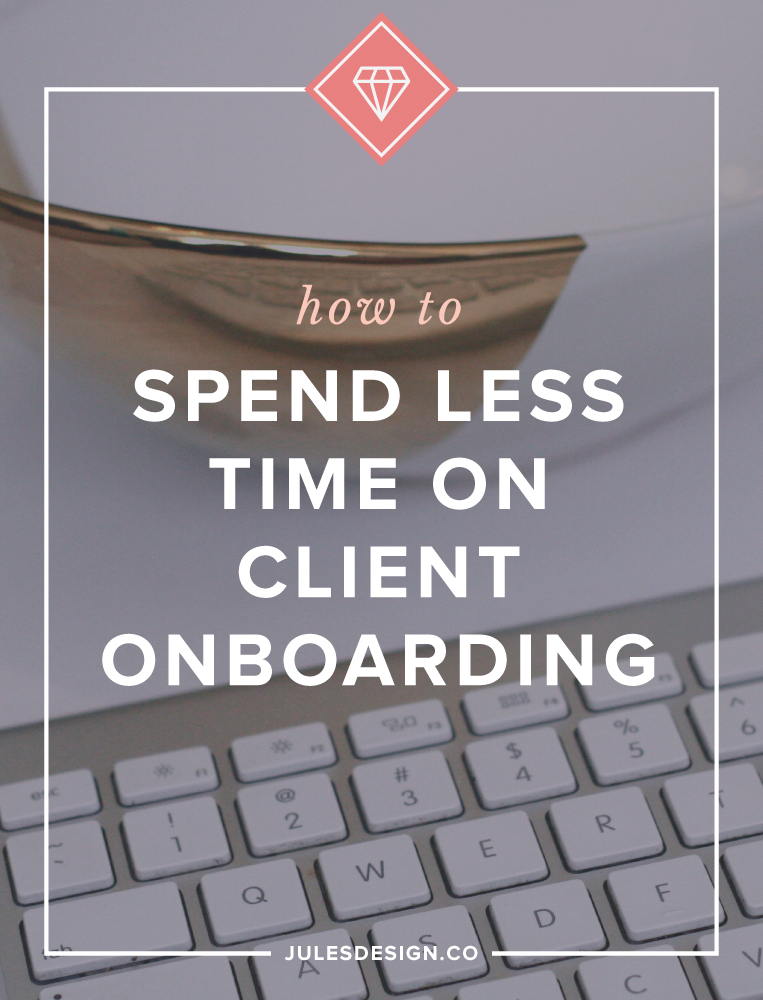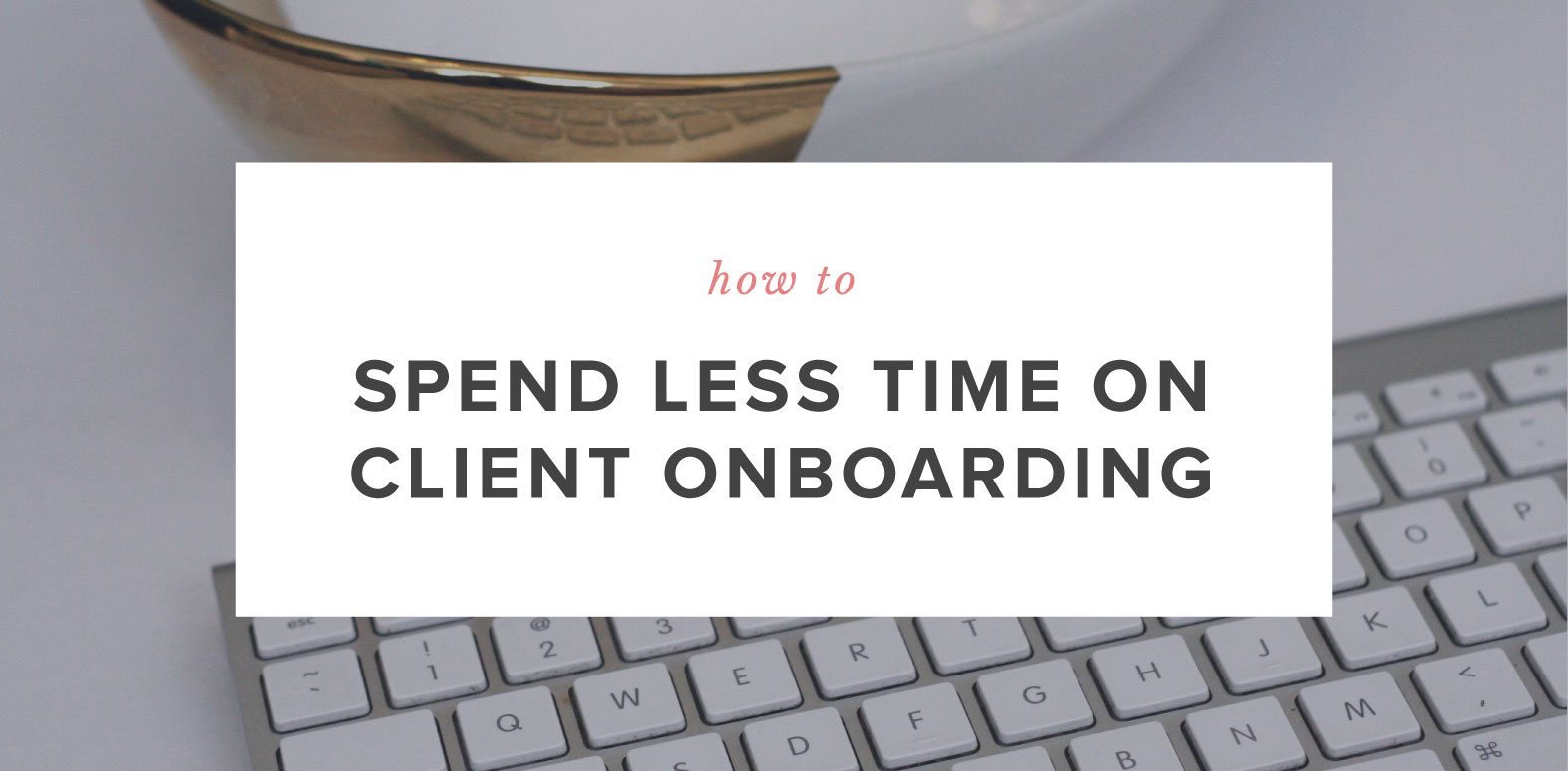Client onboarding was one of those things that I found myself spending way too much time on. I was writing emails from scratch, creating invoices in illustrator and going back and forth via email trying to find a time to schedule our initial meeting. If you can relate to this, then its time to develop a process for client onboarding that saves you time and gets your clients excited about working with you.
Creating canned email responses, developing a project process and building templates will all require that you spend some time working on them up-front. But, they will also save you so much time in the long run. Implementing automated systems will speed up your client onboarding process and will prevent you from working on repetitive tasks.
Today, I’m sharing my onboarding process with you. I hope that it speeds up your workflow and saves you just as much time as it’s saved me!

Utilized Canned Email Responses
Have you ever found yourself sending out the same emails over and over again to clients or prospects? I know that I have. This is where canned email responses, using Gmail, come into play. If you aren’t familiar with canned email responses, they are simply templated emails that you create and then can re-use at any time. Once I took the time to set-up a few canned email responses, I realized that I was saving so much time and should have set these systems up earlier.
One of those emails that I found myself writing over and over again was a welcome email for clients that I was onboarding. Because my process is similar for each client, it made so much sense to create a canned email response and then just edit it as needed. Here’s a brief overview of what I include in my client onboarding email.
- I explain that they will receive a separate email from Hello Bonsai with the contract and first invoice for their project.
- I direct them to a Google Drive folder with client homework
- I invite them to Asana, my project management app so that we can collaborate in one place. I explain that this is where we will be discussing the project moving forward and where they will find any project deliverables.
- I include a link to acuity scheduling so they can choose a date for our first strategy session.
- I include an attachment for my welcome packet.
And that’s it! Now that you know what I include in the initial email, I want to go over how that saves me time beyond just writing the email. Here’s my secret, I use tools and apps to create templates and speed up my process.
Contracts & Invoices
I use Hello Bonsai to send all of my client contract and invoices. When I initially signed up for the app, I selected a contract and created a branded template for my invoices. So, now, Hello Bonsai will automatically create the contract and invoice for me. When I’m onboarding a new client, all I do is, create a new project and then customize my templates before sending them out.
What I love most about this app is that it tracks when someone views a contract or invoice, and, it notifies me once someone signs a contract or pays an invoice. It also automatically sends out reminders if an invoice hasn’t been paid and the due date is approaching.
Client Homework
Client homework is another important step of the onboarding process. Before I get started on any design project, I have my clients fill out a questionnaire so that I can get to know them and their business better. This allows me to create follow-up questions and talking points for our strategy session. It also gives me some key information that I will use for the design portion of the project.
The first thing that I do is create a new Google Drive folder for the project. I have a Google Doc template saved of my client questionnaire that I just duplicate and add to the project folder so that it’s ready for my client to fill out.
I also have my clients send me all of the copy for their website before I get started on the design. So, I’ll set-up the folder structure for these files during client onboarding so that it’s organized and ready to go for the future.
When a client opens the link to the Google Drive folder, they will see a questionnaire, a folder for copy and a folder for photos. I do this so that, all of the content is in one place that I can reference at any time.
Project Management
Managing projects outside of your inbox is one of the best things that you can do to streamline your process. My favorite tool is Asana, but there are truly so many different options available here. A few others that I have either used or heard great things about are Basecamp, ToDoList, and RedBooth. I simply prefer Asana because it has a really easy-to-use interface and its free.
When you sign-up for a project management system, like Asana, take some time to think about what your ideal project process looks like. I’m a website designer, so I asked myself things like:
- When do I want to receive the copy from my clients?
- When will the initial design comps be ready?
- How many revisions will I make?
- How quickly will I require feedback from my clients?
- How long will website development take?
- Etc.
Think through your entire process and develop a unique system that works best for you and your clients. Trust me, taking the time to do this will make your projects so much more organized and efficient. It also allows you, as the designer, to set the tone for the entire project. Because you are the professional, you know what kind of process produces the best quality work. Its your job to create a process that works and will make your clients happy!
Once I had my process down on paper, I moved it into Asana. I created a project template for each of my different design packages. Now, can simply duplicate the project and rename it when I’m onboarding a new client.
I invite my client to join me in Asana so that they can get an overview of the project before it even begins. I have the basics of my process listed out and include due dates for things like client homework and website copy. Once our initial strategy meeting is scheduled, I will fill in the rest of the due dates for the project. My client will see an overview of when I will be presenting the initial comps, when they need to provide feedback and when the design process will be complete. Basically, I outline my entire process, early on, so that my client knows what to expect and also gets an idea of what the tempo of the project will be like.
Scheduling Meetings
All of my website design packages are focused on strategy first. Because of that, scheduling a Skype meeting at the start of a project is critical for my process to work. I need to get to know my client and their business so that I can develop a website that actually brings them results!
I use Acuity Scheduling* for this because it allows me to input all of the days that I’m available and then simply send a link to my client so that they can choose one that works best for them. This means that we don’t spend any time going back and forth via email trying to find a time that works for both of us. Acuity Scheduling also adds the date to Google Calendar so that neither one of you forget that the meeting has been scheduled. Such a time saver!
Welcome Packet
The welcome packet is attached to the client onboarding email as a PDF. I designed it in InDesign and don’t need to customize it for each individual client. I simply attach it and send it along!
The packet was made to welcome my clients to the project and to go over some of the same things that are outlined in my canned email. It includes an overview of what the design process is like and a timeline for the project.
I go into more detail about why I choose to use Asana as a project management tool and why all of our communication will take place in the app. I also direct them to a few quick videos that they can watch about how to use Asana if they need some help.
Although a welcome packet might not be 100% necessary, I think it’s a great visual way to kick off a project together because it shows that you’re dedicated to your design process.
And, that’s my onboarding process! I hope that you found it helpful and that you can implement some of these strategies into your own system. I’m by no means, saying that you need to use the exact same tools that I do. It’s more about finding the ones that work best for you and developing a system around them.
You only get one homepage. Let’s make it work harder. Get a free expert review of your homepage, so it actually attracts your dream clients!
Free Homepage Health Check
Copyright 2022 - All Rights Reserved | Website made by Jules Design (of course!)
Terms & Conditions
Privacy Policy
We are a Richmond Virginia based website design and brand identity design studio for dietitians, nutritionists, health coaches, fitness professionals and wellness entrepreneurs. We love working with brands with compassion in the health space.
